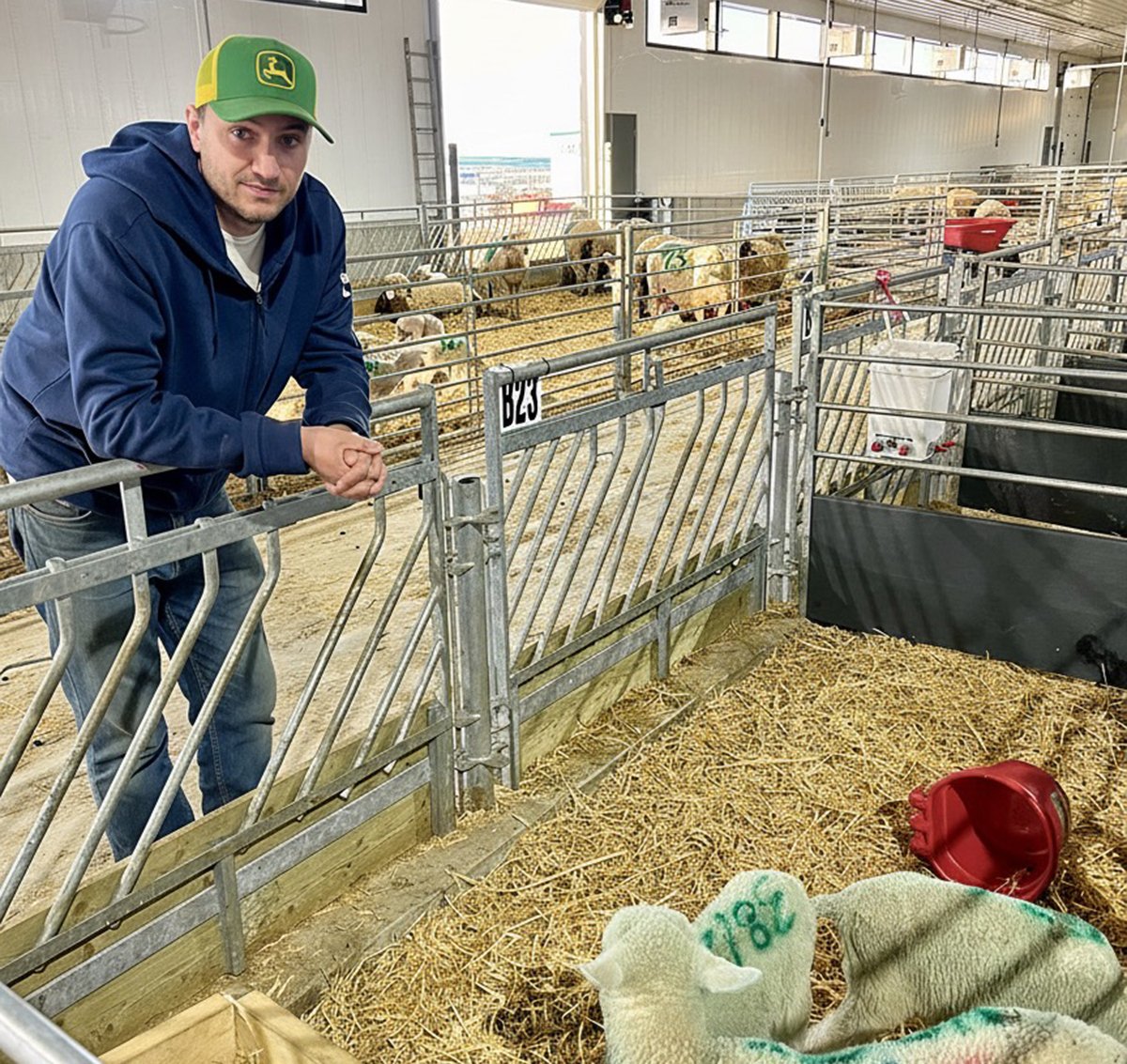DES MOINES, Iowa — It would have been difficult to have chosen a better location for a trade show booth at World Pork Expo in Des Moines.
Pigtek’s large display of housing and feeding equipment was immediately to the right of the main entrance of the international show, an annual event in June that attracts 20,000 producers and pork industry representatives from 33 countries.
About a dozen sales staff and technical experts manned the company’s booth, including Guido Klement, Pigtek’s project group manager for Germany, who leaned against an Electronic Sow Feeding (ESF) station, one of Pigtek’s options for housing and feeding sows.
Read Also

Solar, sheep provide valuable farm diversification
Eric Steeves says raising sheep on forages grown under solar panels provided economic stability and perhaps even saved his family’s fifth generation southern Alberta grain farm.
Pigtek, a consortium of hog industry companies including ChoreTime, Mannebeck, Porcon and Laake, has sold ESF systems for 20 years.
Most of the stations are used in hog barns in Europe, where gestation crates will be banned in 2013, but Klement said American hog producers have also bought the technology.
“Most of the customers that decide to go with ESF, they made it by their own decision,” he said.
“Most of them (producers) see that some (change) is coming up … and they want to be ready when the laws come up.”
Florida, Maine, Michigan, Arizona, California, Colorado and Oregon have either banned gestation crates or are phasing them out.
ESF stations use an identification ear tag to recognize individual sows. The station doles out a specific amount of feed for that sow as it passes through the chute.
“She’s fed her ration throughout the day. After that she’s free to walk around,” said Beau Brumbaugh, another Pigtek employee at Pork Expo.
Klement said most producers keep pregnant sows in groups of 50 to 70 in a common area that provides 2.2 sq. metres of space for each sow.
He said aggressive behaviour and fighting is minimal because timid sows have sufficient space to avoid the alpha sows.
“The story is the bigger the group, the less aggression there will be because the animals have the opportunity to go away from each other.”
He said U.S. pork producers are also buying free access stalls, which pregnant sows can enter and leave as they please.
However, no one knows for sure how many American hog farmers are using open housing compared to sow stalls, said Sherrie Niekamp, director of swine welfare with the National Pork Board.
“It’s a really difficult question to answer because we don’t have national statistics to tell you how many (producers) are using one system or another,” she said.
“We have (U. S.) producers that have used open housing for a long time, we have producers that only use gestation stalls.”
Janeen Salak-Johnson, an animal science professor from the University of Illinois who studies sow stalls, agreed little data is available, but she estimated that a fraction of American hog farmers use open housing for gestating sows.
“I would say producer percentage is very, very small in the U.S.,” she said.
“The typical producer in the U.S., they’re not going to make a move until it’s mandated.”
Murphy Brown, the livestock production subsidiary of Smithfield Foods that manages 450 hog barns in the United States, announced in 2007 it would phase out sow stalls over a decade.
The company uses free access stalls instead of ESF stations, said Salak-Johnson, who is skeptical about ESF technology.
“I don’t see a big push towards ESF systems in the U.S.” she said.
“Even if the mandate were to come, I think you’d be hard pressed to find a whole lot of producers moving to large group pens with an ESF system.”
Salak-Johnson visited European barns with ESF technology in 2007 and came back convinced the system doesn’t mesh with basic animal instincts.
“My big thing … the reason I don’t like ESF, it’s really not a natural way that a sow should eat. Sows want to eat together. They don’t want to sit there and wait. If you want to talk about welfare, I really think there’s a problem (here) with the natural eating behaviours of a sow.”
Klement said Pigtek’s customers report that pregnant sows feed well in ESF stations.
“A lot of them say they have better performance than they had before.”
Salak-Johnson said Manitoba Pork Council’s plan to phase out sow stalls in the province by 2025 is a reasonable time line to research and adopt new systems.
The debate over the animal welfare benefits and performance of stalls versus open housing is on the back burner in the U.S., she added, because the pork industry and U.S. politicians are focused on other issues.
“Now, it’s back to the economy stinks and it’s back to environmental issues,” she said.
“It got hot for awhile in the U.S., but it really was driven by Murphy Brown and Smithfield Foods.”















